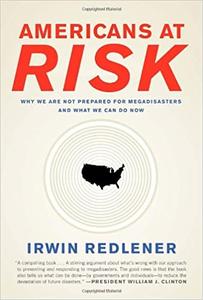
Free Download Irwin Redlener, "Americans at Risk: Why We Are Not Prepared for Megadisasters and What We Can Do"
English | 2006 | ISBN: 0307265269 | 273 pages | EPUB | 0.4 MB
This important book by one of our leading experts on disaster preparedness offers a compelling narrative about our nations inability to properly plan for large-scale disasters and proposes changes that can still be made to assure the safety of its citizens.
Five years after 9/11 and one year after Hurricane Katrina, it is painfully clear that the governments emergency response capacity is plagued by incompetence and a paralyzing bureaucracy. Irwin Redlener, who founded and directs the National Center for Disaster Preparedness, brings his years of experience with disasters and health care crises, national and international, to an incisive analysis of why our health care system, our infrastructure, and our overall approach to disaster readiness have left the nation vulnerable, virtually unable to respond effectively to catastrophic events. He has had frank, and sometimes shocking, conversations about the failure of systems during and after disasters with a broad spectrum of peoplefrom hospital workers and FEMA officials to Washington policy makers and military leaders. And he also analyzes the role of nongovernmental organizations, such as the American Red Cross in the aftermath of Katrina.
Redlener points out how a government with a track record of over-the-top cronyism and a stunning disregard for accountability has spent billions on random acts of preparedness, with very little to show for itother than an ever-growing bureaucracy. As a doctor, Redlener is especially concerned about Americas increasingly dysfunctional and expensive health care system, incapable of handling a large-scale public health emergency, such as pandemic flu or widespread bioterrorism. And he also looks at the serious problem of a disengaged, uninformed citizenryone of the most important obstacles to assuring optimal readiness for any major crisis.
Redlener describes five natural and man-made disaster scenarios as a way to imagine what we might face, what our current systems would and would not prepare us for, and what would constitute optimal planningfor government and the publicin each situation. To see what could be learned from others, he points up some of the more effective ways countries in Europe, Asia, and the Middle East have dealt with various disasters. And he concludes with a real prescription: a nine-point proposal for how America can be better prepared as well as an addendum of what citizens themselves can do.
An essential book for our time, Americans at Risk is a devastating and realistic account of where we stand today.
